Table of Contents |
Volume is the amount of space contained within a three-dimensional object. Shapes such as spheres, prisms, and cylinders are three-dimensional objects that take up a certain amount of space, which we can call its volume. We measure volume in cubic units. Here are some examples of cubic measurements:

|
cubic meters |

|
cubic feet |

|
cubic kilometers |
With these measurements, we can easily tell they are cubic measurements because they include an exponent of three. Not all cubic measurements have this visual clue. For example, the liter is abbreviated with the letter L, and does not contain an exponent of three, yet it is a cubic measurement (it measures liquid volume, and is actually equivalent to 1000 cubic centimeters).
There are several formulas for finding the volumes of different shapes. We are going to focus on the volumes of a rectangular prism, cylinder, and sphere. Here are the formulas to know:
 , where V is volume, l is length, w is width, and h is height
, where V is volume, l is length, w is width, and h is height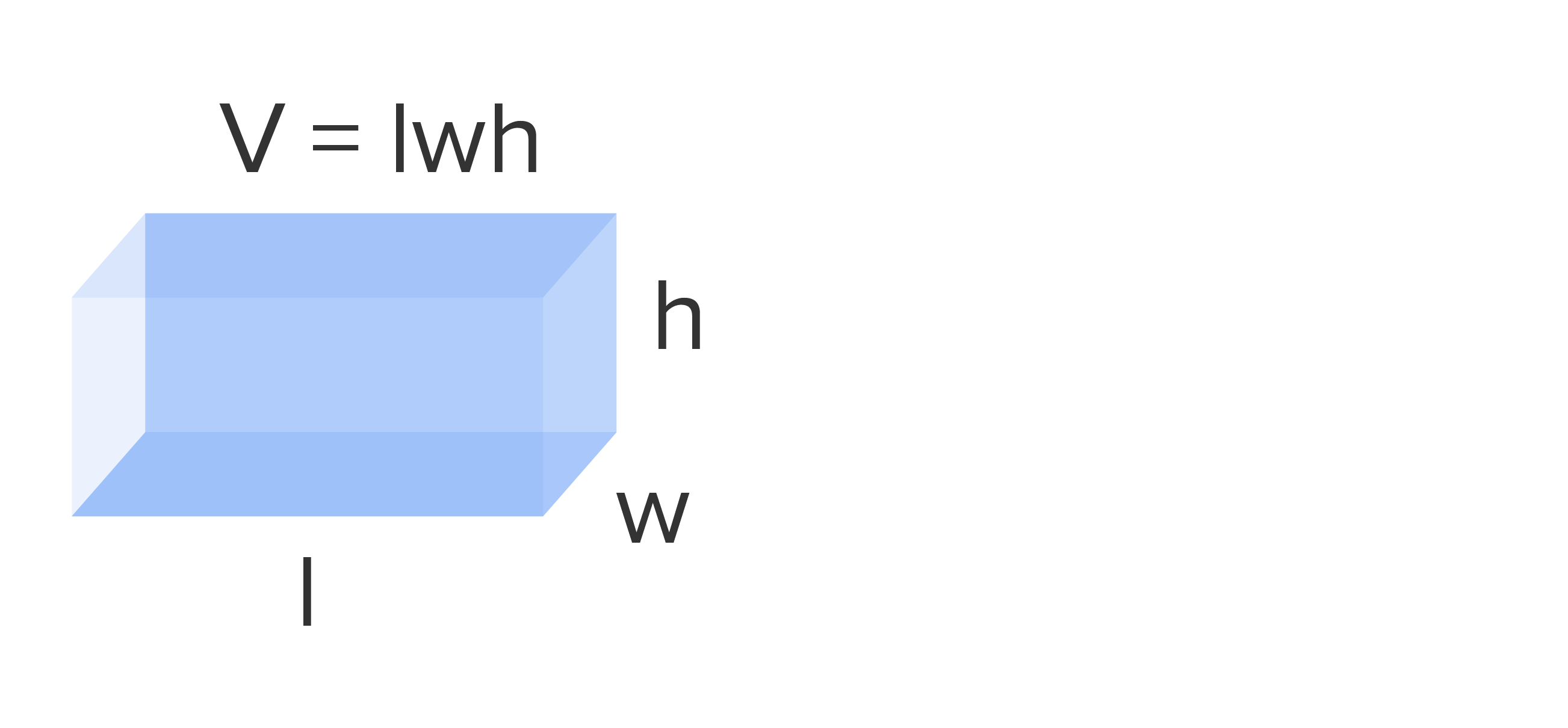
EXAMPLE
Take a look at the figure below: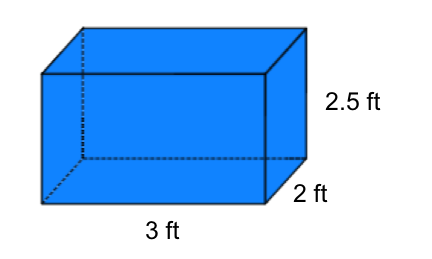

 , where V is volume, r is the radius of the circular base, h is height, and π is approximately 3.14
, where V is volume, r is the radius of the circular base, h is height, and π is approximately 3.14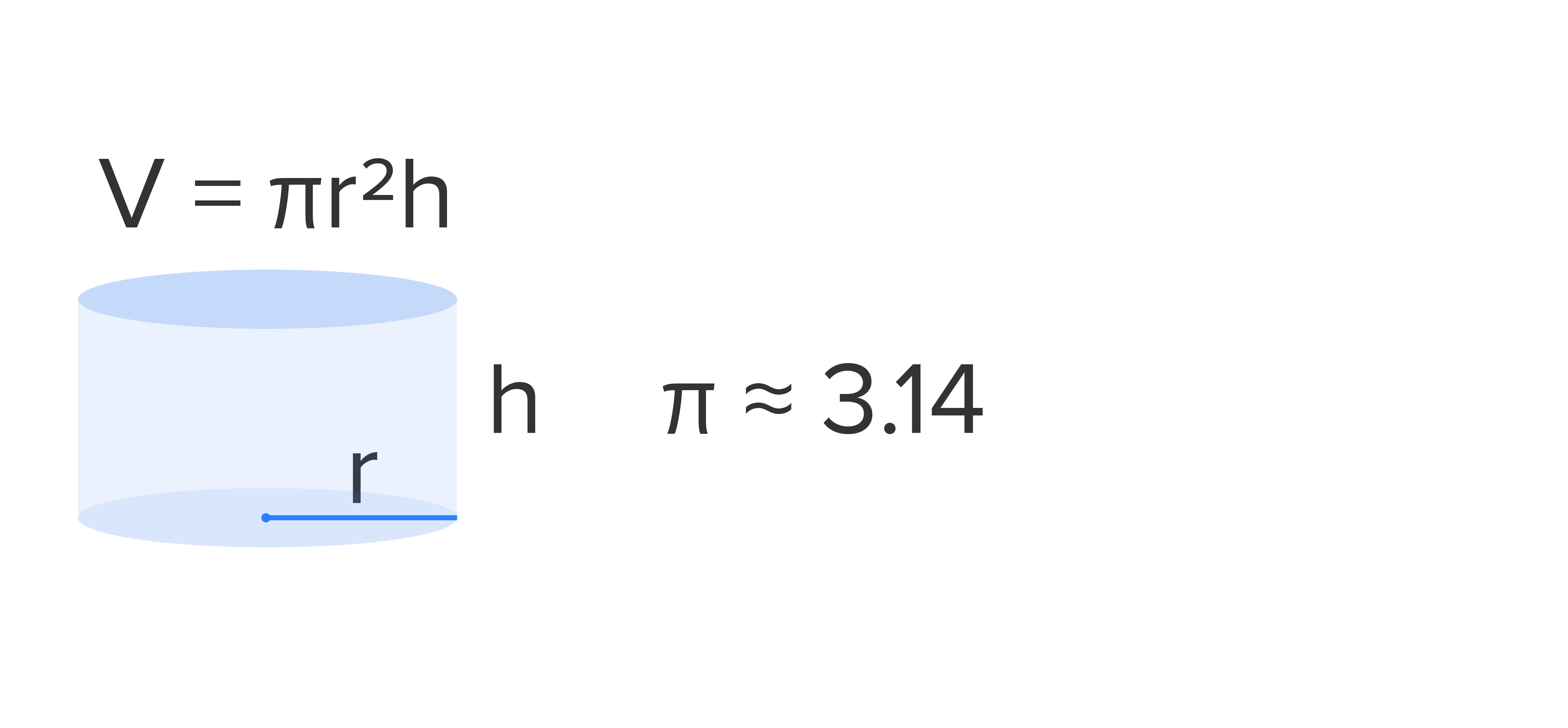
EXAMPLE
Find the volume of the following cylinder: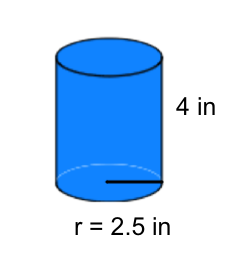

|
Formula for the volume of a cylinder |

|
Substitute radius length and height |

|
Square the radius |

|
Multiply by 4 inches |

|
Our Solution, using 
|

 , where V is volume, r is the radius, and π is approximately 3.14
, where V is volume, r is the radius, and π is approximately 3.14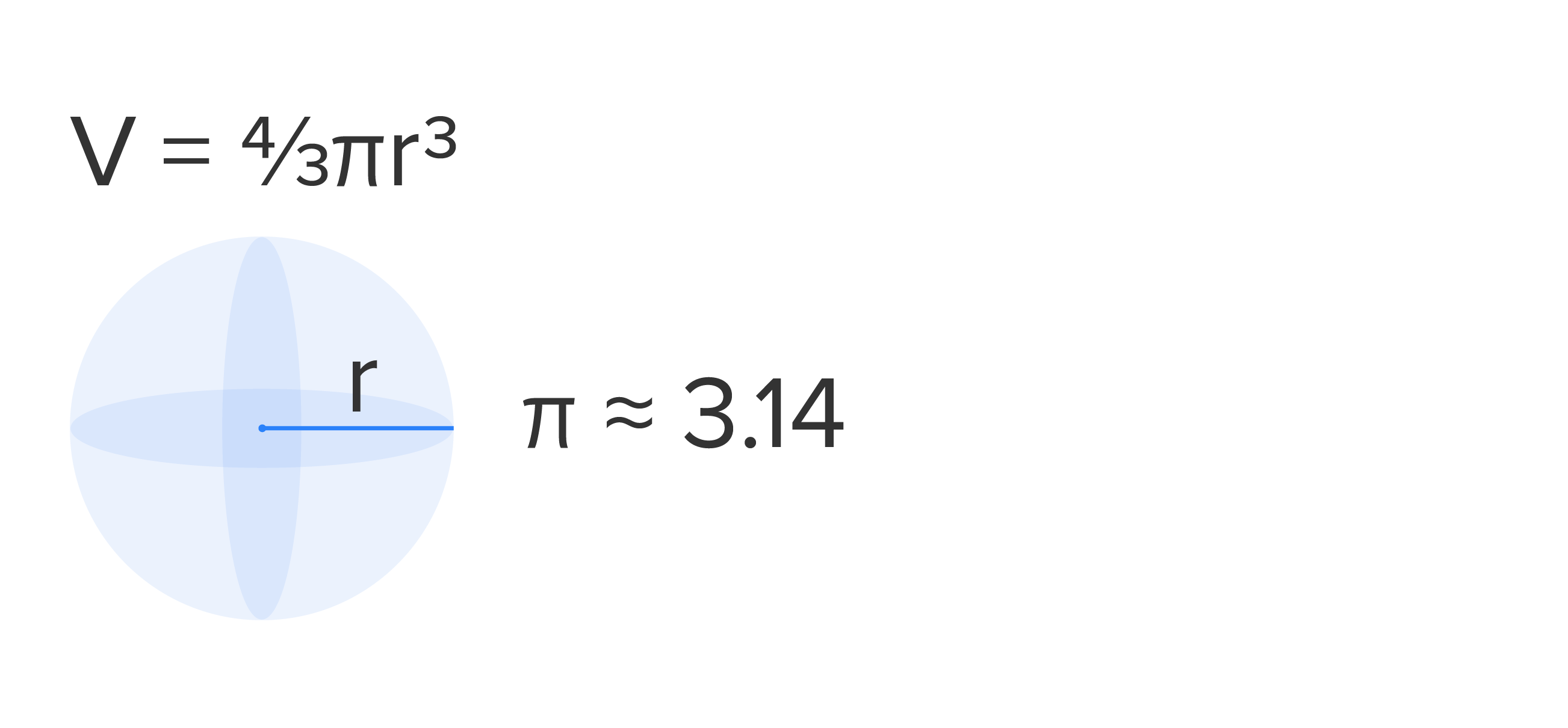
EXAMPLE
Find the volume of the sphere pictured below: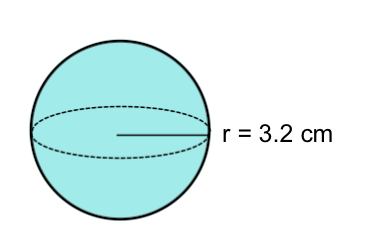

|
Formula for the volume of a sphere |

|
Substitute radius length |

|
Cube the radius |

|
Multiply by 
|

|
Our Solution, using 
|
In our previous examples, we used given measurements for side lengths and radii to calculate the volume of a three-dimensional object. In the following examples, we are going to use a given measurement of volume to calculate a side length or a radius. We will use the same formulas, but in a different way.
EXAMPLE
Find the side length of a rectangular prism: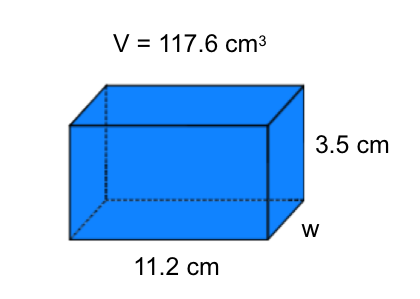


|
Divide volume by length and height |

|
Simplify denominator |

|
Our Solution |
Lastly, let's use a volume formula to solve for an unknown radius.
EXAMPLE
Find the radius for the sphere below: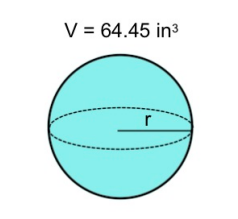

 We need to undo this by applying inverse operations, but also in reverse order. This means first we need to undo the multiplication by
We need to undo this by applying inverse operations, but also in reverse order. This means first we need to undo the multiplication by  and then undo the power of 3.
and then undo the power of 3.

|
Volume of a Sphere Formula |

|
Divide both sides by 
|
 
|
Apply the cube root of both sides |

|
Our Solution |
 is a number, so it can be divide in one step. One strategy is to evaluate
is a number, so it can be divide in one step. One strategy is to evaluate  first and then divide it through both sides of the equation. Another strategy is to divide by
first and then divide it through both sides of the equation. Another strategy is to divide by  first (or multiply by the reciprocal), and then divide by pi. You could also first divide by pi, and then divide by
first (or multiply by the reciprocal), and then divide by pi. You could also first divide by pi, and then divide by  (or multiply by the reciprocal). These are all valid methods.
(or multiply by the reciprocal). These are all valid methods.
Source: ADAPTED FROM "BEGINNING AND INTERMEDIATE ALGEBRA" BY TYLER WALLACE, AN OPEN SOURCE TEXTBOOK AVAILABLE AT www.wallace.ccfaculty.org/book/book.html. License: Creative Commons Attribution 3.0 Unported License